House built in 1982, got water behind the tiles in the bathroom which were adhered directly to drywall. I ripped the tiles and moldy drywall out, and am trying to determine if I need to replace the insulation as well. Attached photos show what the insulation behind looks like.
My initial thought was that it is moldy, but after reading around a bit I guess it’s somewhat normal for insulation to end up like this because of dust/air moving through the insulation. Any idea which I’m dealing with here, or how I can determine for sure?
It’s an exterior wall if that makes a difference, and there is a window on that wall. The wood looks fine to me, just a bit of black which you can see in one photo (the other darker black is tar I think?). So I’m thinking the moisture never made it through the vapor barrier which I’m hoping is a good sign.
My initial thought was that it is moldy, but after reading around a bit I guess it’s somewhat normal for insulation to end up like this because of dust/air moving through the insulation. Any idea which I’m dealing with here, or how I can determine for sure?
It’s an exterior wall if that makes a difference, and there is a window on that wall. The wood looks fine to me, just a bit of black which you can see in one photo (the other darker black is tar I think?). So I’m thinking the moisture never made it through the vapor barrier which I’m hoping is a good sign.
Attachments
-
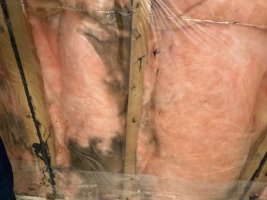 36AD5EF1-59E1-4C9D-A824-C963CDA929B0.jpeg58.7 KB · Views: 39
36AD5EF1-59E1-4C9D-A824-C963CDA929B0.jpeg58.7 KB · Views: 39 -
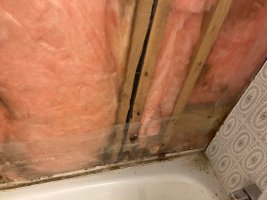 B00600C4-E487-4153-9F7F-F36636833959.jpeg57.6 KB · Views: 46
B00600C4-E487-4153-9F7F-F36636833959.jpeg57.6 KB · Views: 46 -
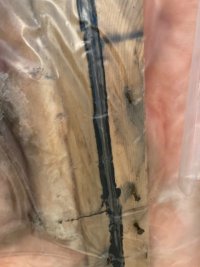 35214A2D-8C6A-4705-A939-C94818A23903.jpeg47.4 KB · Views: 48
35214A2D-8C6A-4705-A939-C94818A23903.jpeg47.4 KB · Views: 48 -
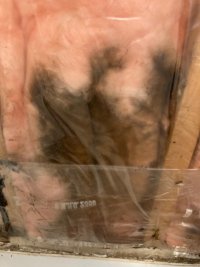 29C0677F-0BE9-4D11-87AF-DB4292462C15.jpeg46.8 KB · Views: 43
29C0677F-0BE9-4D11-87AF-DB4292462C15.jpeg46.8 KB · Views: 43 -
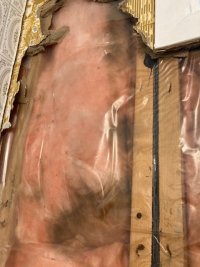 B17B384A-42B6-44F9-A8B6-22C7D8538529.jpeg64.2 KB · Views: 43
B17B384A-42B6-44F9-A8B6-22C7D8538529.jpeg64.2 KB · Views: 43
